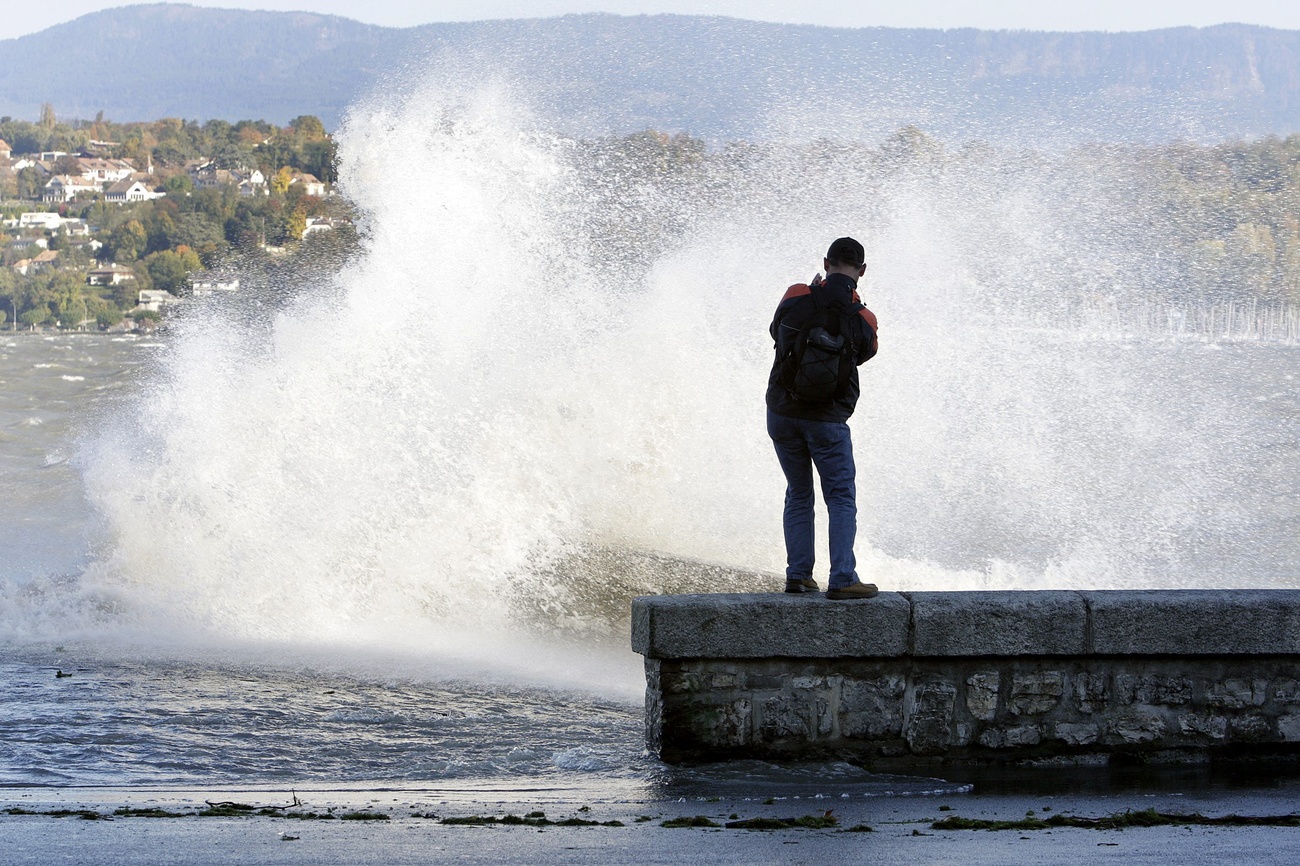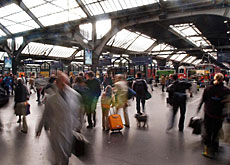Geneva station gets a controversial facelift

Like many of Switzerland’s railway hubs, Geneva station is undergoing a major transformation in an attempt to keep up with travellers’ changing needs.
But in a third report on Swiss stations, swissinfo finds that a new outdoor platform at the city’s terminus is being described by some residents as an urban eyesore.
“This is a ridiculous and pointless monstrosity,” a veteran taxi driver told swissinfo. “It is nothing but chaos trying to access this station by road.”
One of the main purposes of the platform is to provide shelter for passengers waiting for the new tramline that connects the United Nations to the city centre.
Partially covered by a transparent canopy and supported by tall pillars, it lends an almost carnival-like appearance to the station’s main square, which serves as a hub for the city’s main bus lines and two major traffic arteries.
Most cars have been diverted to the far side of the square, while taxis and buses continue to pass in front of the station’s main exit – a system that has both drivers and pedestrians seeing red.
“It’s difficult to know when or where to cross the road in order to reach the bus stops near the platform,” said one female pedestrian. “They should have built a bridge over the road or made it more practical to cross underneath.”
Rail City
But if the layout of the outside of the station has proven unpopular, travellers are more likely to approve of the changes inside.
Ultimately, the station is expected to become part of Switzerland’s nationwide network of “Rail Cities” – a Swiss Federal Railways project to turn the country’s main stations into ultra-modern, multi-service facilities.
“We want to open the stations not only to businesses but also for other services,” explained Hans Zimmermann, the head of Rail City Switzerland.
“For example, the stations in Zurich and Lucerne have medical care facilities and we plan to do the same in Geneva.”
His comments were echoed by the project’s architect, Inès Lamunière, who sees rail transport as an integral part of daily life.
“Each day, 40,000 people transit through this station,” she said, “and despite the trend towards working from home, the vast majority of the population still has to move around in order to get to work.”
Babysitting
“But their needs are changing… and I can easily imagine that we could have babysitting services and a learning centre here at the station.”
According to Laumière and Zimmermann, gone are the days when rail stations served simply as the end points for long, tiring journeys.
Today, the Federal Railways sees rail stations as being at the crossroads of a vast network of transportation, commerce and even communication.
In fact, the west wing of Geneva’s station has become home to “Le Temps” – one of the city’s leading daily newspapers, which also has offices in other Swiss rail stations.
Ten years of transformation
Built at the end of the 1920s, Geneva station has just undergone the first half of its transformation and is preparing for another round of renovations, due to start in 2006.
Plans for the second phase have not yet been finalised, but Lamunière believes the changes will allow the station to play an integral part in the economic development of the city.
“Stations not only allow people to get from one place to another,” said Lamunière.
“They are also becoming points of interface between different types of transport and movement.”
It is also expected that Geneva’s regional train line will eventually be extended to provide a link between the city centre and the French border city of Annemasse.
swissinfo, Frédéric Burnand and Anna Nelson in Geneva
Around 40,000 people pass through Geneva station each day.
It is the fourth largest station in Switzerland, after Zurich, Bern and Basel.
It generates annual travel revenue of SFr92 million.
230 trains operate from Geneva station, including 170 inter-regional and 50 regional services.

In compliance with the JTI standards
More: SWI swissinfo.ch certified by the Journalism Trust Initiative











You can find an overview of ongoing debates with our journalists here . Please join us!
If you want to start a conversation about a topic raised in this article or want to report factual errors, email us at english@swissinfo.ch.